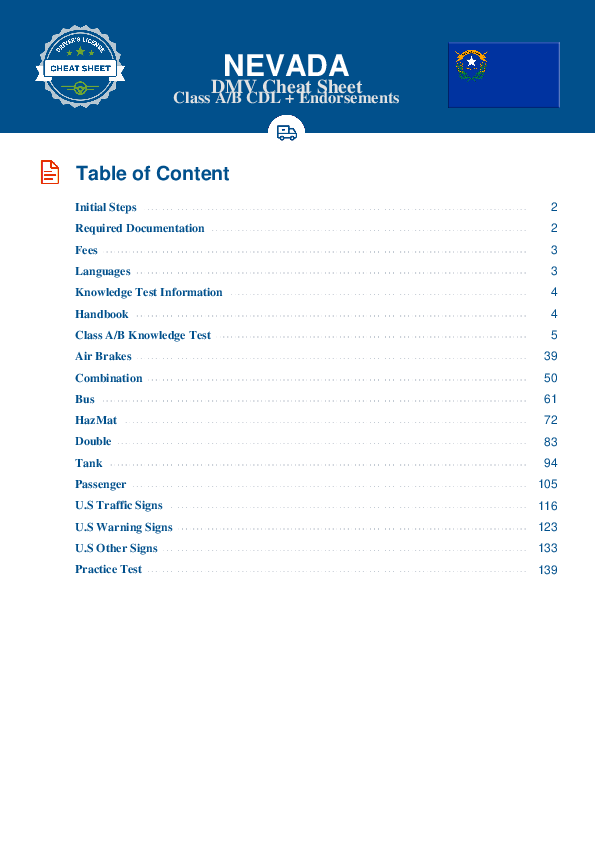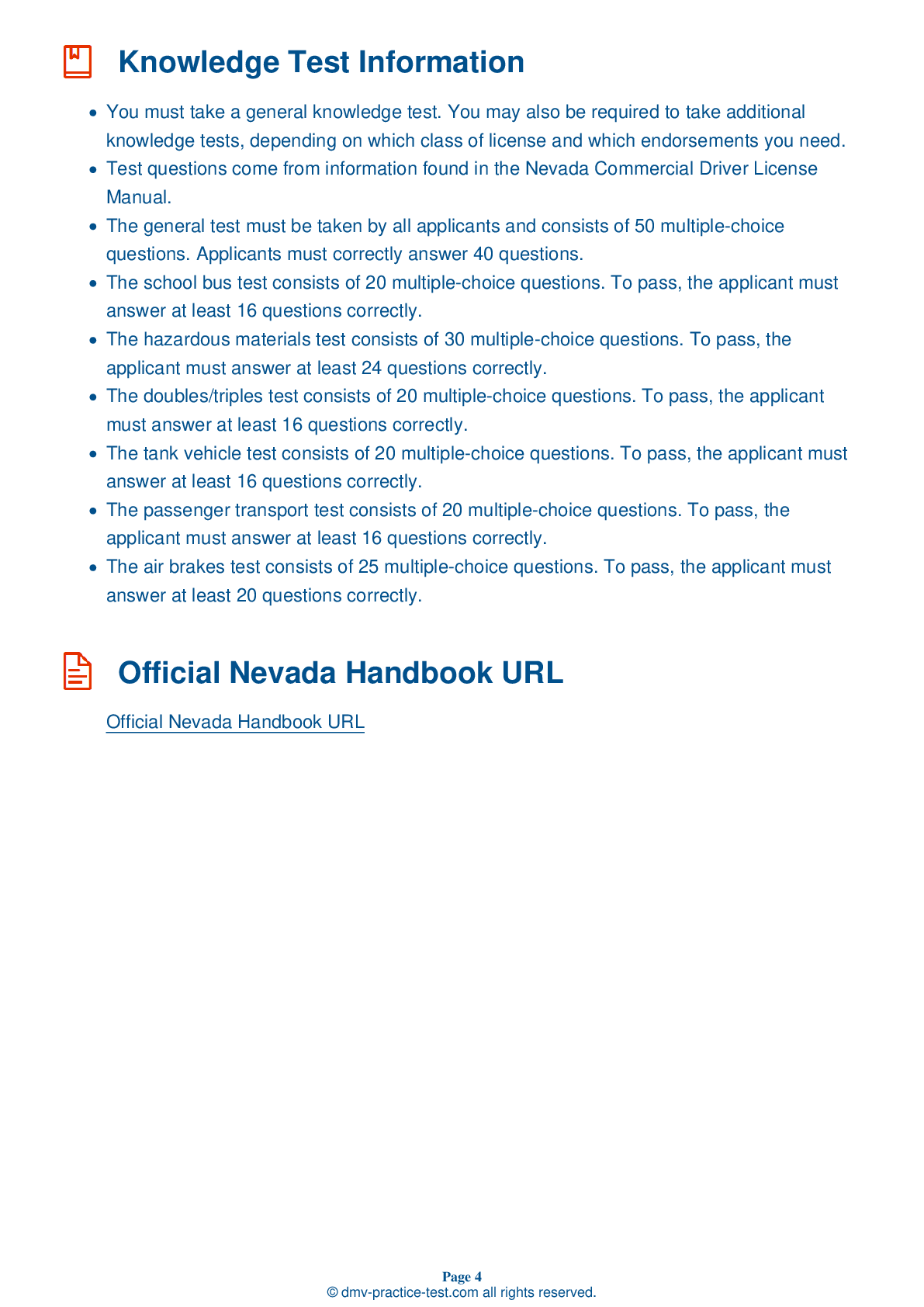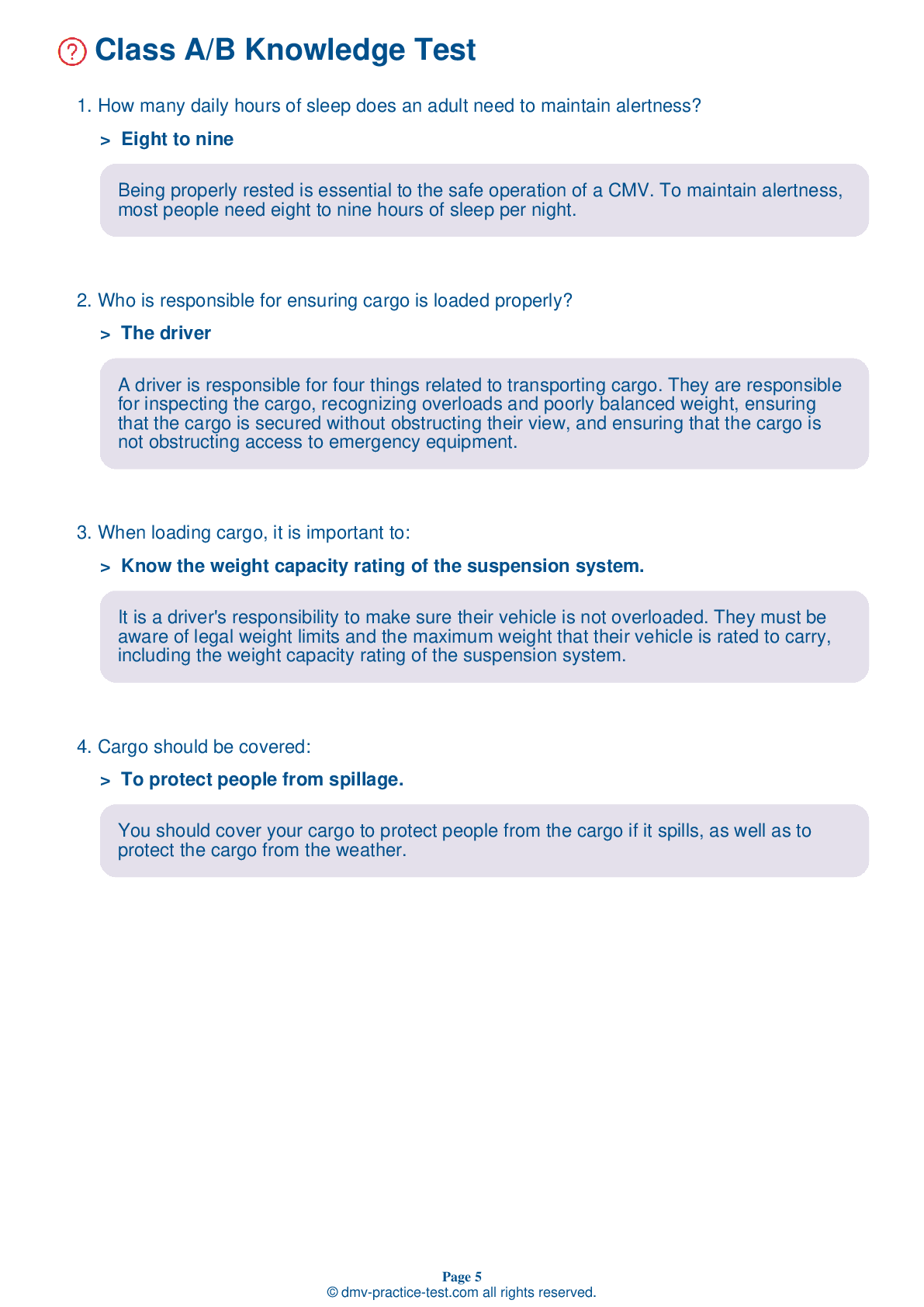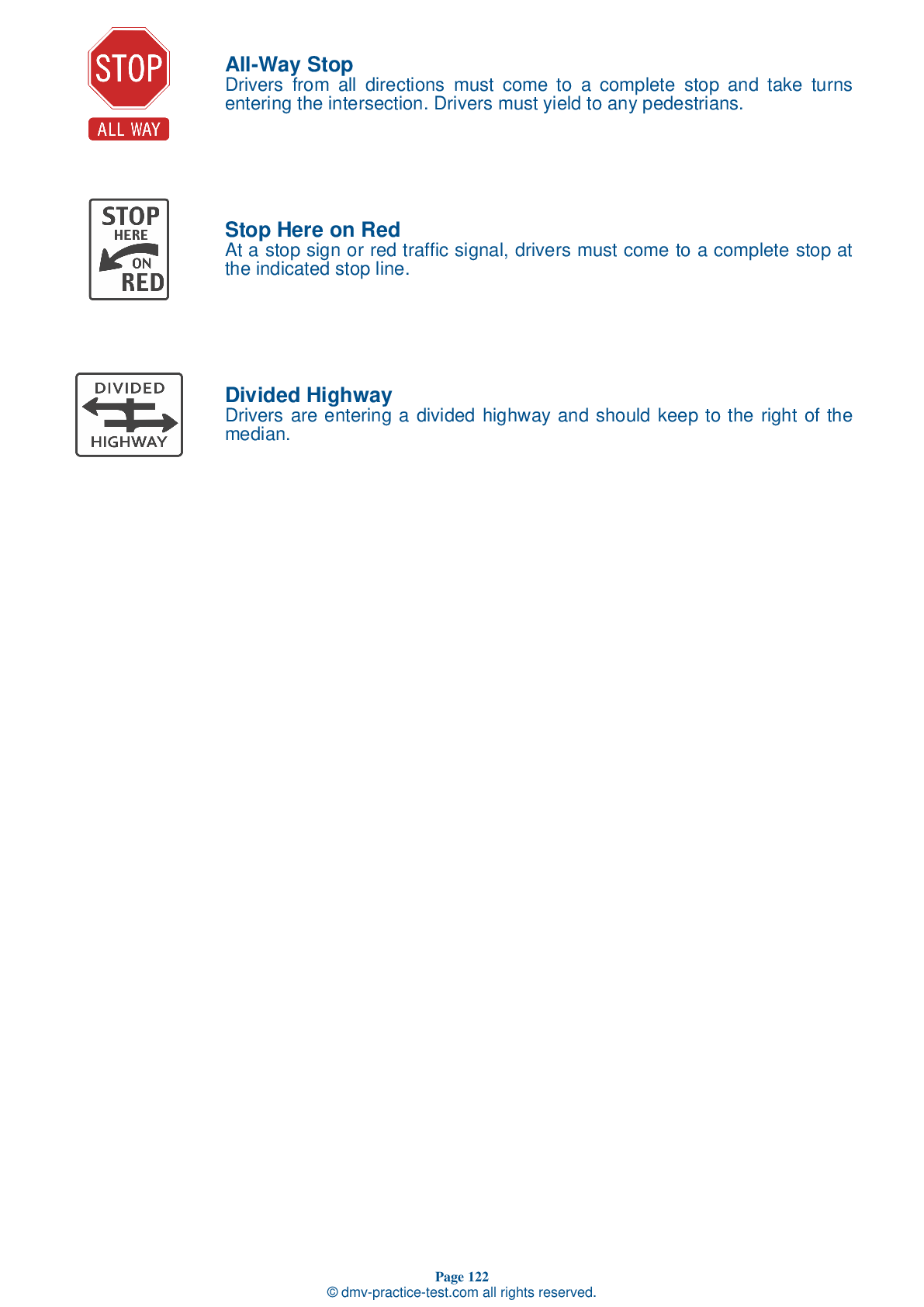Combination Vehicles Practice Test | Nevada 2025 #1 Page 2 of 3
Train for FREE online with our Nevada CDL combination vehicle test. The official exam test consists of several obligatory parts, with all of them checking your knowledge of different blocks of road rules. If you need to obtain a NV combination license in 2025, practice as much as possible. Free sample tests published on our website will help you check and improve your knowledge and boost your grades. Please bear in mind that DMV requirements for issuing a combination license may vary from state to state.
8 . When a combination vehicle goes around a corner:
When a vehicle goes around a corner, the rear wheels follow a different path than the front wheels. This is called off-tracking. This effect is especially pronounced on vehicles with trailers.
9 . When driving a combination rig, following distance should be:
In comparison to driving a single vehicle, you should maintain an extended following distance when driving a combination rig. Combinations require longer stopping distances than smaller vehicles.
10 . When the wheels of a trailer lock up:
A trailer may swing out and strike other vehicles if its wheels lock up. This is especially likely with lightly-loaded trailers.
11 . During a trip, landing gear should be:
Landing gear, or trailer supports, should always be completely raised before a vehicle is driven. Landing gear that is not entirely raised could catch on railroad tracks or other hazards on the roadway.
12 . If a load is placed on one side of a trailer, the trailer:
If the weight of a load is placed primarily one side of a trailer, the trailer may lean, increasing the risk of a rollover.
13 . When coupling, after you've connected the air lines to the trailer, you should:
Correctly following the steps to couple and uncouple trailers is vital to safely operating a combination vehicle. After connecting the air lines to the trailer while coupling, you should supply air to the trailer.
14 . If a trailer begins to jackknife, you should not:
If a trailer begins to jackknife, you should release the brakes and allow the trailer wheels to regain traction with the road. Do not apply the trailer hand brake to attempt to straighten out the rig because it will only prolong the skid. The application of brakes is what caused the wheels to lock in the first place.
See the exact questions that will be on the 2025 Nevada DMV exam.
99.2% of people who use the cheat sheet pass the FIRST TIME
Lillian MCcranie explains how our CDL study guide was helpful in passing the exam and recommends it to everyone.
Cameron tells us how he purchased the CDL exam, and found it to be a useful tool which helped him pass the exam and find a job.



